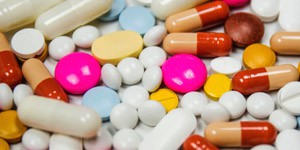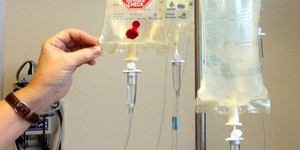By Mariano Garcia de Palau

Born in Barcelona, 17 February 1956. Graduated in medicine and surgery from the University of Barcelona in 1979. For 38 years has worked as an emergency physician in the area of occupational medicine. He became interested in cannabis by chance, and for the last 15 years has studied its therapeutic uses.
Currently he continues to advise on cannabinoid treatments and performs clinical work with patients, collaborates with various organizations and associations, serves as Senior Consultant for Grupo Curativa Colombia and is a spokesperson for the Spanish Medical Cannabis Observatory.
The term 'refractory epilepsy' is used to describe cases in which epileptic fits are so frequent that they limit the patient's ability to live a full life as they would wish and in accordance with their mental and physical capacity, or when the anticonvulsant treatment does not control the seizure or when its side effects limit the individual's normal development.
It is worth reflecting on this definition for a moment. Refractory epilepsy can be very limiting for both the patient and their home environment, especially in children. In some cases, parents face an uncertain future with little progress for their children. Depending on the type of epilepsy, the first seizures tend to appear between the first and fifth year of life. The children may have between one fit per week, in the mildest of cases, and 30, 50, 70 or even more seizures per day in many cases. Seizures can occur at any time or they may follow a pattern (for example, when the patient is asleep or relaxed or just after waking up). In many cases, patients are dependent around the clock, and have cognitive and psychomotor problems, ranging from mild to severe, which can permanently limit their learning capacity or mobility. Some patients even require a wheelchair to get about. They frequently have no verbal language, and cannot express what they feel. In most cases their growth is also restricted. At these ages, they should be interacting with their environment and developing the skills they will need in the future, but refractory epilepsy poses a huge problem for the normal development of the patient.
Epilepsy is a neurological disorder which manifests as a result of an alteration in the neuron activity of some area of the brain. This neuronal hyper-excitability can be transmitted from one initial focus to different areas of the brain. It is then that the epileptic seizures or fits take place. These may take many forms, depending on the specific type of epilepsy.
Epilepsy has many causes. It may appear after a head injury, meningitis, problems during birth, a metabolic alteration, etc. Other kinds of epilepsy are of genetic or unknown origin. These are called idiopathic epilepsies. The epileptic fits, and the disease in itself, cause many cognitive and psychological problems. There is always some degree of neuronal death after each fit, and this determines the short and medium-term prognosis.
Antiepileptic drugs are not always effective in eliminating or reducing the attacks. They are used either on their own or in combination. In the latter case, interactions can be caused between pharmaceuticals, thus complicating their use. There are also a number of very common side effects, including: shaking, weight gain, gastrointestinal disorders, drowsiness, toxic hepatitis, hyperammonemia (ammonia poisoning), cutaneous exanthemas, encephalopathies, increase in fits, behavioural changes, poor performance at school, vertigo, loss of field of vision, etc.
Patients who suffer frequent epilepsy therefore face some very complex issues with regard to the use of antiepileptics and the secondary effects that can arise during treatment, which may in some cases require hospitalisation.
Some cannabinoids modulate neuron activity, reducing the hyperexcitability that occurs in epilepsy patients. It is important to note that during and after epileptic fits, many free radicals and inflammatory foci are found which are largely responsible for the brain damage. Cannabinoids such as CBD and THC are effective in situations of neuroinflammation and help reduce the oxidative stress. They therefore have a neuroprotective, as well as an antiepileptic, effect. In many cases, it is necessary to include some quantity of THC in the mix, in order to complete the effect of the CBD.
When using cannabinoids from plant extract, it is important know the composition of the product. This must be correctly analysed to ascertain the cannabinoid ratio and determine the precise dose.
Some of the main syndromes occurring with refractory epilepsy are listed below, to give an idea of the situation:
Dravet syndrome
This a type of childhood epilepsy of genetic origin, resistant to antiepileptics. The symptomatology begins in the first year of life of life, with clonic seizures and also with absence seizures (petit mal), (i.e. either with generalised complex seizures, or merely with loss of consciousness). There is a death rate of 14% during fits or seizures. Patients continue to have seizures throughout their life, as well as intellectual disability (severe in 50% of cases, and moderate or mild in all others).
Different antiepileptics are used, on their own or in combination. In many cases, a ketogenic diet is also followed. Patients are sometimes also treated with antipsychotics or sleep-inducing drugs.
Lennox-Gastaut's syndrome
This is a disorder that occurs with multiple types of seizures, and tends to manifest itself before 4 years of age. Tonic seizures appear with flexing of the neck and body, extending of arms and legs, and contraction of the facial muscles. It can also be accompanied by flushing of the face, rolling of the eyes and apnea. Seizures are short in length and can happen by night or by day, with no regular schedule. Patients usually lose consciousness.
There may also be absence seizures, with momentary loss of conscience and dribbling. They tend to be multiresistant to common antiepileptics, which can have serious side effects.
In some cases, antiepileptics which are effective for one type of seizure only aggravate others.
West syndrome
This is a serious type of epilepsy, which appears most frequently between the third and twelfth month of life. It may be due to different causes such as cerebral malformations or dysplasias, infections, metabolic alterations or genetics. It occurs with the presence of seizures with sudden and symmetrical contractions of the extremities, and possible flexing or extension of the limbs. On occasions there may also be facial flushing, mydriasis (dilation of the pupìls) and hyperhidrosis (excessive sweating). This disease is also accompanied by psychomotor retardation, which affects the cognitive sphere, its interaction with the environment and its mobility.
A specific pattern called hypsarrhythmia can be seen on an EEG (electroencephalogram). Treatment consists of antiepileptics, benzodiazepines, Vitamin B6, corticoids, etc. Patients have a 5% mortality rate.
Doose Syndrome
This type of epilepsy appears between the first and fifth year of life, and is more prevalent among males. It tends to be resistant or refractory to antiepileptic drugs.
Attacks involve seizures, sometimes falls and loss of muscle tone. 40% of patients suffer mental retardation or disability.
As well as the syndromes described above, there are many forms of epilepsy that have not been classified, and which have no causal diagnosis. In such cases, it is difficult to give treatment guidelines with regard to the most suitable antiepileptic for the specific type of seizure or syndrome.
What should we expect when starting CBD treatment on a paediatric patient affected with refractory epilepsy?
In most cases (65%), the number and frequency of the fits can be reduced. In some patients, there is a change in the type of fit and a reduction in intensity. The children are calmer, allowing them to use their brains for other necessary tasks and skills. Parents frequently remark that they are "more connected".
Most patients have severe cognitive deficits in many cases, and the effects of CBD at a cognitive and psychomotor level are easy to appreciate. Patients relate better to their environment, interact actively when they did not do so before and in many cases their school performance improves, giving a real boost to morale in the patient's home environment. It is important to bear in mind that in such cases, a small improvement can represent a major step forward. These are very complex cases, and keeping the children stable is a difficult task, given that the occurrence of seizures depends on many factors, including emotional ones, which we often fail to take into account. Remember that many patients have no verbal language. Because they cannot speak, they cannot express their feelings and cannot communicate properly. In many children, this generates frustration which can lead to self-harming or aggression. CBD can also help to normalise these situations in many cases.
The majority of patients have run out of valid therapeutic alternatives, and CBD is therefore a very interesting resource, given its low toxicity and its effectiveness as an antiepileptic.
Is THC indicated in the treatment of refractory epilepsy?
Five thousand years ago, the Chinese were already using cannabis sativa to treat epilepsy, and we can be sure that those varieties had a THC/CBD ratio of at least 1/1.
In most cases, CBD is combined with a percentage of THC of less than 0.2 %, formulated, for example, in olive oil, making it a legal product.
However, some patients require a THC/CBD ratio of 1-2 / 15-17, for example. Oils of this profile are showing good results among some children. Therefore, if the patient develops satisfactorily with "legal" CBD, THC should not be provided. However, in other cases it may be necessary to consider this option, with all the "legal" insecurity this might cause for their parents, were any problem to arise related to the use of cannabinoids. Nonetheless, we have encountered no problems that might place the patient's health at risk or cause side effects that cannot be easily solved by correcting the dose in most cases.
Clinical trials are still required to prove that cannabinoids can be useful as antiepileptics, although the use of CBD and THC, in different ratios and proportions, is proving effective for the treatment of some refractory epilepsy. They may also be effective for treating other types of epilepsy in adults, for example.
It is important to stress the low toxicity of cannabinoids, and it is necessary to study the interactions that may develop between antiepileptics and cannabinoids, so that any combinations of the two can be handled with greater certainty.
No information is yet available on the medium and long term effects of CBD use. However, thus far no significant side effects have been detected that might pose a problem in long-term treatment.


